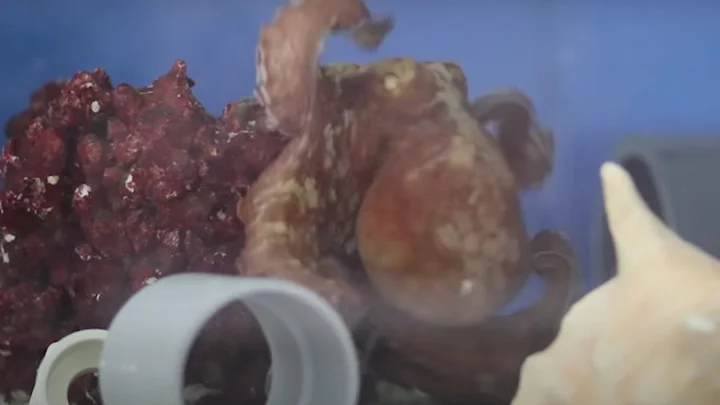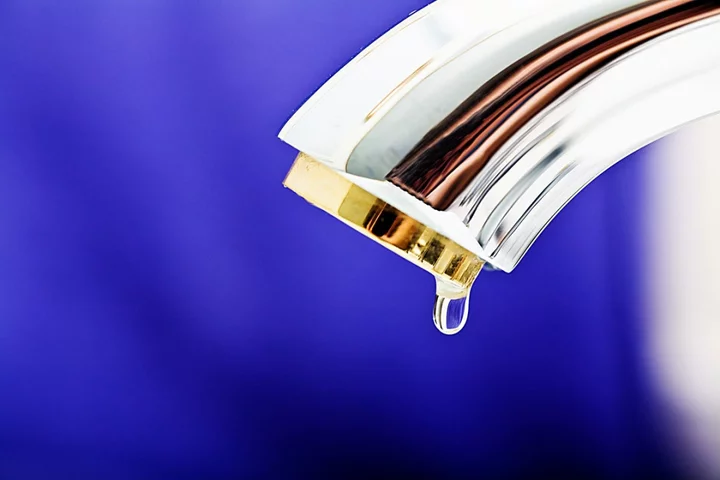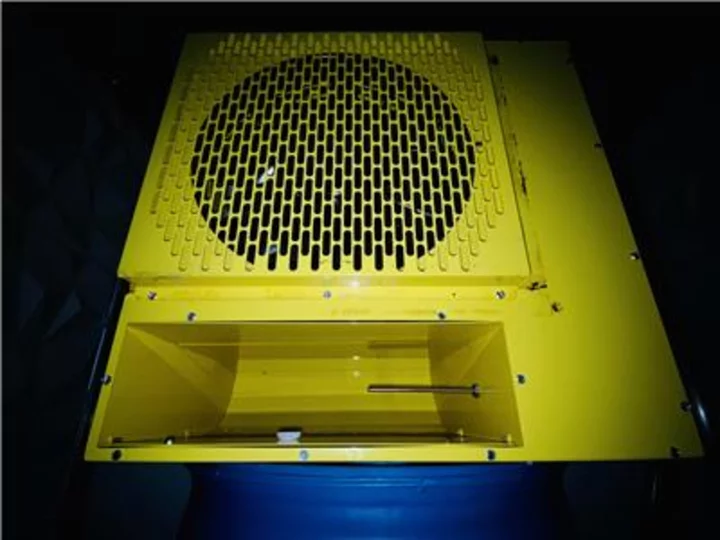SpaceX has successfully launched Starship, the world’s most powerful rocket, for the first ever time. The spacecraft took off from Texas early on Saturday local time. It marked SpaceX’s second attempt to launch the spacecraft, after a previous test in April saw the rocket exploded soon after launch. The booster that carried the spacecraft up towards orbit exploded after it detached from the main spacecraft. SpaceX said that it had known there was a chance that the booster would be destroyed in the launch. But the main part of the ship successfully carried on towards the edge of space. Eventually, SpaceX hopes that Starship will fly to the Moon and help with missions to Mars. But first it must undergo a series of uncrewed tests to ensure it is safe. Elon Musk - SpaceX‘s founder, chief executive and chief engineer - also sees Starship as eventually replacing the company’s workhorse Falcon 9 rocket as the centerpiece of its launch business that already lofts most of the world’s satellites and other commercial payloads into space. NASA, SpaceX‘s primary customer, has a considerable stake in the success of Starship, which the US space agency is counting on to play a central role in its human spaceflight program, Artemis, successor to the Apollo missions of more than a half century ago that put astronauts on the moon for the first time. Starship’s towering first-stage booster, propelled by 33 Raptor engines, puts the rocket system’s full height at some 400 feet (122 meters) and produces thrust twice as powerful as the Saturn V rocket that sent the Apollo astronauts to the moon. SpaceX is aiming to at least exceed Starship-Super Heavy’s performance during its April 20 test flight, when the two-stage spacecraft blew itself to bits less than four minutes into a planned 90-minute flight. That flight went awry from the start. SpaceX has acknowledged that some of the Super Heavy’s 33 Raptor engines malfunctioned on ascent, and that the lower-stage booster rocket failed to separate as designed from the upper-stage Starship before the flight was terminated. The company’s engineering culture, considered more risk-tolerant than many of the aerospace industry’s more established players, is built on a flight-testing strategy that pushes spacecraft to the point of failure, then fine-tunes improvements through frequent repetition. A failure at any point in the test flight would be a major concern for NASA, which is counting on SpaceX‘s rapid rocket development ethos to swiftly get humans to the moon in the U.S. competition with China’s lunar ambitions. Judging the success or failure of the outcome may be less than clear-cut, depending on how far the spacecraft gets this time. NASA Administrator Bill Nelson, who has made the China rivalry a key need for speed, compared Starship’s test campaign with the success of SpaceX‘s past rocket development efforts. “How did they develop the Falcon 9? They went through many tests, sometimes it blew up,” Nelson told Reuters on Tuesday. “They’d find out what went wrong, they’d correct it then go back.” The combined spacecraft in April reached a peak altitude of roughly 25 miles (40 km), only about halfway to space at its target altitude of 90 miles (150 km), before bursting into flames. Musk has said that an internal fire during Starship’s ascent damaged its engines and computers, causing it to stray off course, and that an automatic-destruct command was activated some 40 seconds later than it should have to blow up the rocket. The launch pad itself was shattered by the force of the blastoff, which also sparked a 3.5-acre (1.4-hectare) brush fire. No one was injured. SpaceX has since reinforced the launch pad with a massive water-cooled steel plate, one of dozens of corrective actions that the U.S. Federal Aviation Administration required before granting a launch license on Wednesday for the second test flight. Additional reporting by agencies Read More SpaceX launches ‘zero fuel’ engine into space SpaceX is launching the world’s biggest rocket – follow live SpaceX to launch world’s biggest rocket again after first attempt ended in explosion The world’s most powerful rocket should launch imminently, Elon Musk says Why Apple is working hard to break into its own iPhones OpenAI co-founder Sam Altman ousted as CEO
SpaceX has successfully launched Starship, the world’s most powerful rocket, for the first ever time.
The spacecraft took off from Texas early on Saturday local time. It marked SpaceX’s second attempt to launch the spacecraft, after a previous test in April saw the rocket exploded soon after launch.
The booster that carried the spacecraft up towards orbit exploded after it detached from the main spacecraft. SpaceX said that it had known there was a chance that the booster would be destroyed in the launch.
But the main part of the ship successfully carried on towards the edge of space.
Eventually, SpaceX hopes that Starship will fly to the Moon and help with missions to Mars. But first it must undergo a series of uncrewed tests to ensure it is safe.
Elon Musk - SpaceX‘s founder, chief executive and chief engineer - also sees Starship as eventually replacing the company’s workhorse Falcon 9 rocket as the centerpiece of its launch business that already lofts most of the world’s satellites and other commercial payloads into space.
NASA, SpaceX‘s primary customer, has a considerable stake in the success of Starship, which the US space agency is counting on to play a central role in its human spaceflight program, Artemis, successor to the Apollo missions of more than a half century ago that put astronauts on the moon for the first time.
Starship’s towering first-stage booster, propelled by 33 Raptor engines, puts the rocket system’s full height at some 400 feet (122 meters) and produces thrust twice as powerful as the Saturn V rocket that sent the Apollo astronauts to the moon.
SpaceX is aiming to at least exceed Starship-Super Heavy’s performance during its April 20 test flight, when the two-stage spacecraft blew itself to bits less than four minutes into a planned 90-minute flight.
That flight went awry from the start. SpaceX has acknowledged that some of the Super Heavy’s 33 Raptor engines malfunctioned on ascent, and that the lower-stage booster rocket failed to separate as designed from the upper-stage Starship before the flight was terminated.
The company’s engineering culture, considered more risk-tolerant than many of the aerospace industry’s more established players, is built on a flight-testing strategy that pushes spacecraft to the point of failure, then fine-tunes improvements through frequent repetition.
A failure at any point in the test flight would be a major concern for NASA, which is counting on SpaceX‘s rapid rocket development ethos to swiftly get humans to the moon in the U.S. competition with China’s lunar ambitions.
Judging the success or failure of the outcome may be less than clear-cut, depending on how far the spacecraft gets this time. NASA Administrator Bill Nelson, who has made the China rivalry a key need for speed, compared Starship’s test campaign with the success of SpaceX‘s past rocket development efforts.
“How did they develop the Falcon 9? They went through many tests, sometimes it blew up,” Nelson told Reuters on Tuesday. “They’d find out what went wrong, they’d correct it then go back.”
The combined spacecraft in April reached a peak altitude of roughly 25 miles (40 km), only about halfway to space at its target altitude of 90 miles (150 km), before bursting into flames.
Musk has said that an internal fire during Starship’s ascent damaged its engines and computers, causing it to stray off course, and that an automatic-destruct command was activated some 40 seconds later than it should have to blow up the rocket.
The launch pad itself was shattered by the force of the blastoff, which also sparked a 3.5-acre (1.4-hectare) brush fire. No one was injured. SpaceX has since reinforced the launch pad with a massive water-cooled steel plate, one of dozens of corrective actions that the U.S. Federal Aviation Administration required before granting a launch license on Wednesday for the second test flight.
Additional reporting by agencies
Read More
SpaceX launches ‘zero fuel’ engine into space
SpaceX is launching the world’s biggest rocket – follow live
SpaceX to launch world’s biggest rocket again after first attempt ended in explosion
The world’s most powerful rocket should launch imminently, Elon Musk says
Why Apple is working hard to break into its own iPhones
OpenAI co-founder Sam Altman ousted as CEO









